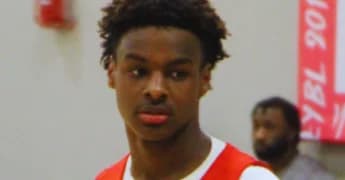
From Durags to Trash Talk: Inside Patrick Beverly’s Game Unique All-White NBA Starting Five Selection
Patrick Beverly’s game of creating an NBA starting five consisting of “the least white” All white players has stirred both amusement and controversy in the basketball community. While the lighthearted nature of the game may have been intended for entertainment, the underlying implications of categorizing players based on racial stereotypes cannot be ignored.
While Patrick Beverly’s game may have been intended as a playful exercise, it inadvertently highlights deeper issues surrounding racial stereotypes in sports. By categorizing players based on their perceived deviation from racial norms, Beverly’s game risks perpetuating harmful stereotypes and undermining the diversity and complexity of individuals within the NBA.
Beverly’s choices for his all-white starting five reflect a blend of on-court talent, personal encounters, and perceived cultural deviations. From Tyler Herro‘s memorable first encounter to Alex Caruso’s reputation for trash-talking, each player brings a unique element to Beverly’s unconventional lineup.
While Beverly’s game may have been lighthearted, the criteria used to select players raises questions about the underlying biases and stereotypes present in sports culture. By focusing on characteristics perceived as “least white,” Beverly’s game inadvertently reinforces harmful stereotypes rather than celebrating the diverse talents and contributions of all NBA players.
Beverly’s inclusion of personal anecdotes, such as his interaction with Tyler Herro, adds a humanizing element to the selection process. However, it also underscores the subjective nature of player evaluations and the potential for personal biases to influence perceptions.
As the NBA continues its efforts to promote diversity and inclusion, Beverly’s game serves as a reminder of the importance of challenging stereotypes and embracing the multifaceted identities of athletes. Moving forward, players and commentators alike need to promote narratives that celebrate the richness of diversity within the league.
While Beverly’s game may have been intended as a playful exercise, it underscores the need for greater sensitivity and awareness surrounding representations of race in sports. By recognizing and challenging the underlying biases present in player evaluations, the basketball community can work towards fostering a more inclusive and equitable environment for all athletes.
Patrick Beverly’s game of creating an NBA starting five consisting of “the least white” All white players has stirred both amusement and controversy in the basketball community. While the lighthearted nature of the game may have been intended for entertainment, the underlying implications of categorizing players based on racial stereotypes cannot be ignored.
While Patrick Beverly’s game may have been intended as a playful exercise, it inadvertently highlights deeper issues surrounding racial stereotypes in sports. By categorizing players based on their perceived deviation from racial norms, Beverly’s game risks perpetuating harmful stereotypes and undermining the diversity and complexity of individuals within the NBA.
Beverly’s choices for his all-white starting five reflect a blend of on-court talent, personal encounters, and perceived cultural deviations. From Tyler Herro‘s memorable first encounter to Alex Caruso’s reputation for trash-talking, each player brings a unique element to Beverly’s unconventional lineup.
While Beverly’s game may have been lighthearted, the criteria used to select players raises questions about the underlying biases and stereotypes present in sports culture. By focusing on characteristics perceived as “least white,” Beverly’s game inadvertently reinforces harmful stereotypes rather than celebrating the diverse talents and contributions of all NBA players.
Beverly’s inclusion of personal anecdotes, such as his interaction with Tyler Herro, adds a humanizing element to the selection process. However, it also underscores the subjective nature of player evaluations and the potential for personal biases to influence perceptions.
As the NBA continues its efforts to promote diversity and inclusion, Beverly’s game serves as a reminder of the importance of challenging stereotypes and embracing the multifaceted identities of athletes. Moving forward, players and commentators alike need to promote narratives that celebrate the richness of diversity within the league.
While Beverly’s game may have been intended as a playful exercise, it underscores the need for greater sensitivity and awareness surrounding representations of race in sports. By recognizing and challenging the underlying biases present in player evaluations, the basketball community can work towards fostering a more inclusive and equitable environment for all athletes.






